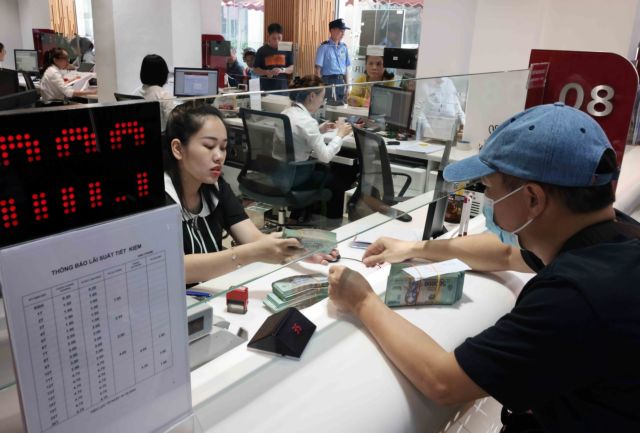 Economy
Economy

The revolution of technology 4.0 has fundamentally changed the business and management model of banks following the digital banking trend.
 |
| The win-win co-operation and the resonance strength between the banks and fintech companies is the main development trend in the financial market and Vietnamese banks today. — Photo sbv.gov.vn |
HÀ NỘI — The revolution of technology 4.0 has fundamentally changed the business and management model of banks.
The State Bank of Việt Nam (SBV) in collaboration with the Ministry of Planning and Investment and the Ministry of Science and Technology organised a workshop on applying science and technology in the financial sector as part of the “Connecting Việt Nam Innovation Network 2018”.
Speaking at the opening ceremony, Deputy Governor of the State Bank Nguyễn Kim Anh said that the banking sector was not outside the influence of the industrial revolution 4.0.
In order to catch up with the development of science and technology, Vietnamese banks had researched and invested in their products, services, operations and governance.The most prominent was the practical deployment of digital platforms such as cloud computing, big data analysis, artificial intelligence, biometric authentication and data exchange through open application platforms, he said.
Vietnamese banks were investing heavily in information technology infrastructure, new generation corebank software and application of innovative solutions in line with the general trends of digitalisation to provide digital banking products and services in a simple, friendly, automated, smart and multi-channel (omni-channel) approach. In addition to the emergence and application of digital technologies, there is the development and expansion of the domestic financial services ecosystem with the presence of fintech companies.
The win-win co-operation and the resonance strength between the banks and fintech companies is the main development trend in the financial market and Vietnamese banks today.
Nghiêm Thanh Sơn, deputy director of the SBV Payment Department, said that the impact of the 4.0 revolution required the financial market infrastructure including payment systems to be changed. However, the impact of the 4.0 revolution on the banking industry had made the risk of cyber attacks greater and more permanent due to the open, continuous, multidimensional and complex connections. — VNS









